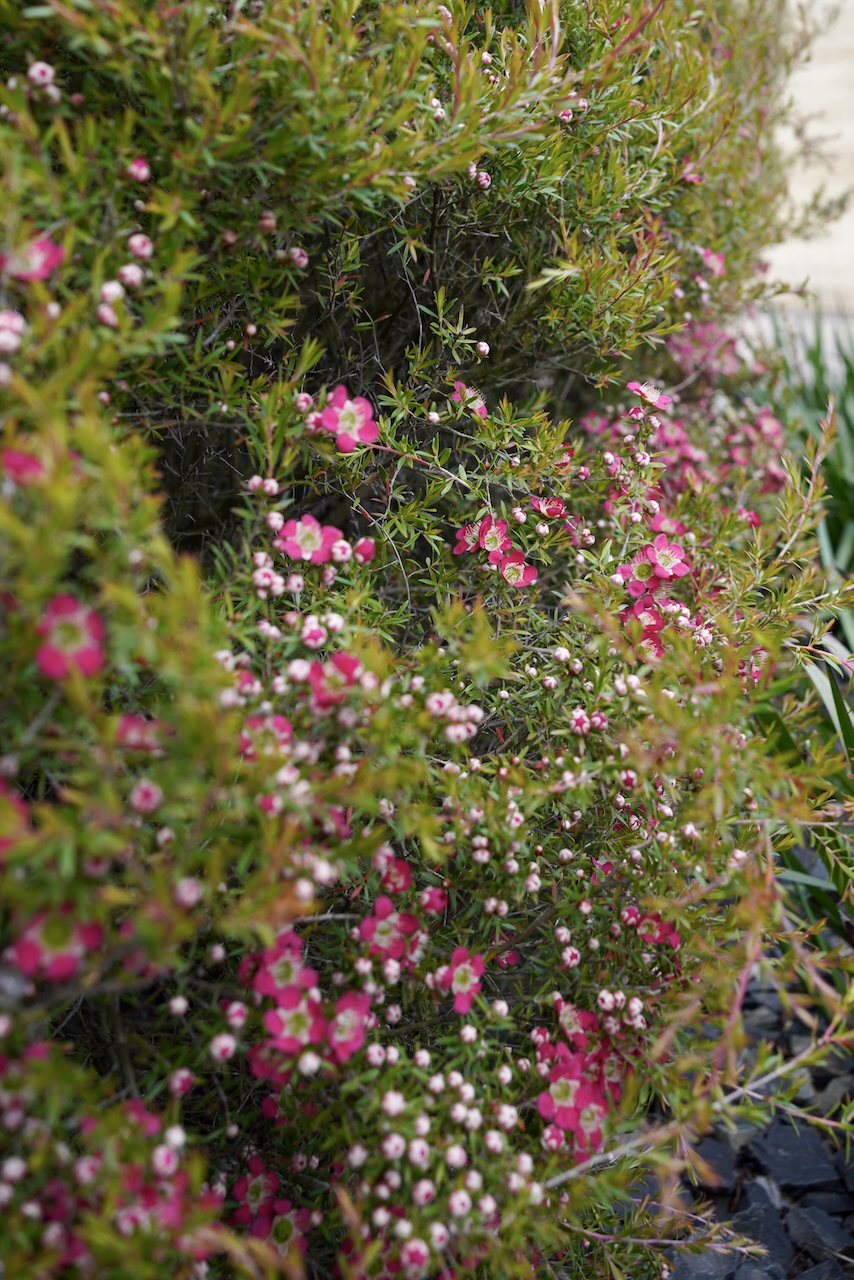-

Correa baeuerlenii
Here is another of my very favourite Correas that is such a useful plant in the landscape. Correa baeuerlenii or Chef’s Hat Correa is found naturally growing on the south coast of NSW on shady, damp sites, therefore it grows happily under large trees and will cope with periods of dry and also light frost.
-

Coronidium elatum: The lesser Known paper daisy
This is a paper daisy which you may have seen growing in the bush, popping its flower heads up but often looking quite scraggly. Well the good news is this species of paper daisy makes a wonderful garden specimen. It responds so well to pruning, it can be shaped into a small shrub and will…
-

Philotheca myoporoides and it’s many forms
This gorgeous shrub is called Wax Flower or Philotheca, which apparently means “loving receptacle”. And that it is, providing plenty of flowers for pollinators and scent for humans, it is a very hardy species which can handle sun and shade in equal measure. Because of its hardiness it is one of the most widely cultivated…
-

however you like it: correa glabra
This small to medium shrub is commonly known as Rock Correa, due to its ability to grow in gravelly soils, making it super tough. I absolutly love Correas but find it quite difficult to grow them in my location. Correa glabra is easily the toughest one I use in coastal NSW gardens. In fact the…
-

The purity of Grevillea ‘Ivory Whip’
I am quite selective and fussy when it comes to large flowering spike Grevilleas, some of them I find incredibly garish and I dislike the way they attract the aggressive nectar feeding birds. For some reason this medium sized Grafted Grevillea remains an exception for me. The flowers of Grevillea ‘Ivory Whip’ are not in…
-

The perfect Scented Screen: Leptospermum ‘Little Lemon Scents’
This dwarf graceful, weeping tea tree is a wonderful addition to any garden, it can be used as a privacy screen, in a mixed hedge or as a soft backdrop in a layered planting. The compact habit of Little Lemon Scents is far smaller growing and more shapely than its parent, Leptospermum petersonii (Lemon-Scented Tea…
-

The show stopping: Banksia ‘Giant Candles’
This superb specimen of Banksia ‘Giant Candles’ forced me to drive around the block a couple of times before I could find a park and give it the photo shoot it deserves. This extra large shrub or, as I prefer to call it, small tree is a cross between Banksia ericifolia and Banksia spinulosa. Somehow…
-

Pimelea: which one is which
I love Pimeleas, they seem to always be in flower and each state has its own unique species. Pimelea’s are a stunning addition to a garden or even a pot. They put on a show with a mass of flowers and the butterflies love them . But which one is which? We are trying our…
-

Darwinia citriodora another WA toughie
To be honest I didn’t realise this lovely medium shrub hailed from the West, silly me. I think I assumed Darwinias were local to coastal NSW due to the prominence of taxifolia and fascicularis when I go bushwalking close to home. They are a stunning Genus, all have intresting leaf structure and get covered in…
-

Good morning Iris: Orthrosanthus multiflorus
The flower spikes on the morning Iris really do say good morning all through Spring, it is such a luminous shade of deep blue almost purple that is impossible not to notice. The flowers are displayed on upright stems rising almost a metre above the tufted foliage. Orthrosanthus multiflorus can be found growing naturally on…
-

The oh so fun Leptospermum ‘outrageous’
Leptospermum ‘Outrageous’ puts on a show of brilliant pink-red flowers in Spring, and it absolutely covers itself as the weeks go on. This medium shrub has delicate weeping branches and it can be pruned into a low hedge or border plant. It is also showy enough to be a great feature shrub even when not…
-

Spillover for the pollinators: Leptospermum ‘vertical drop’
Most of us know how wonderful Tea trees are for our pollinators and honey bees, and Leptospermum polygalifolium is up there with some of the most floriferous. This gorgeous low growing and cascading form is Leptospermum polygalifolium ssp. cismontanum ‘Vertical Drop’. This sub species naturally grows on the east coast of Australia in sandy and…
-

The little known Banksia ericifolia ‘Little Eric’
Banksias all over Australia are hitting their flowering stride this season, from Autumn until Spring is when most Banksia species will be covered in nectar rich flower spikes. Most people are familiar with the Dwarf Banksia spinulosa cultivars like ‘Birthday Candles’ and ‘Coastal Cushions’. This post is a little shout out to a lesser know…
-

Hide it with Hibbertia scandens
Hibbertia scandens or Guinea Flower is one of the most hardy and useful native plants I know of. It can be used as a ground cover, a low shrub, climber or it can even be pruned and shaped into lovely topiary shapes. In the images of this post I used it as a screening species…
Tag: Poolside

